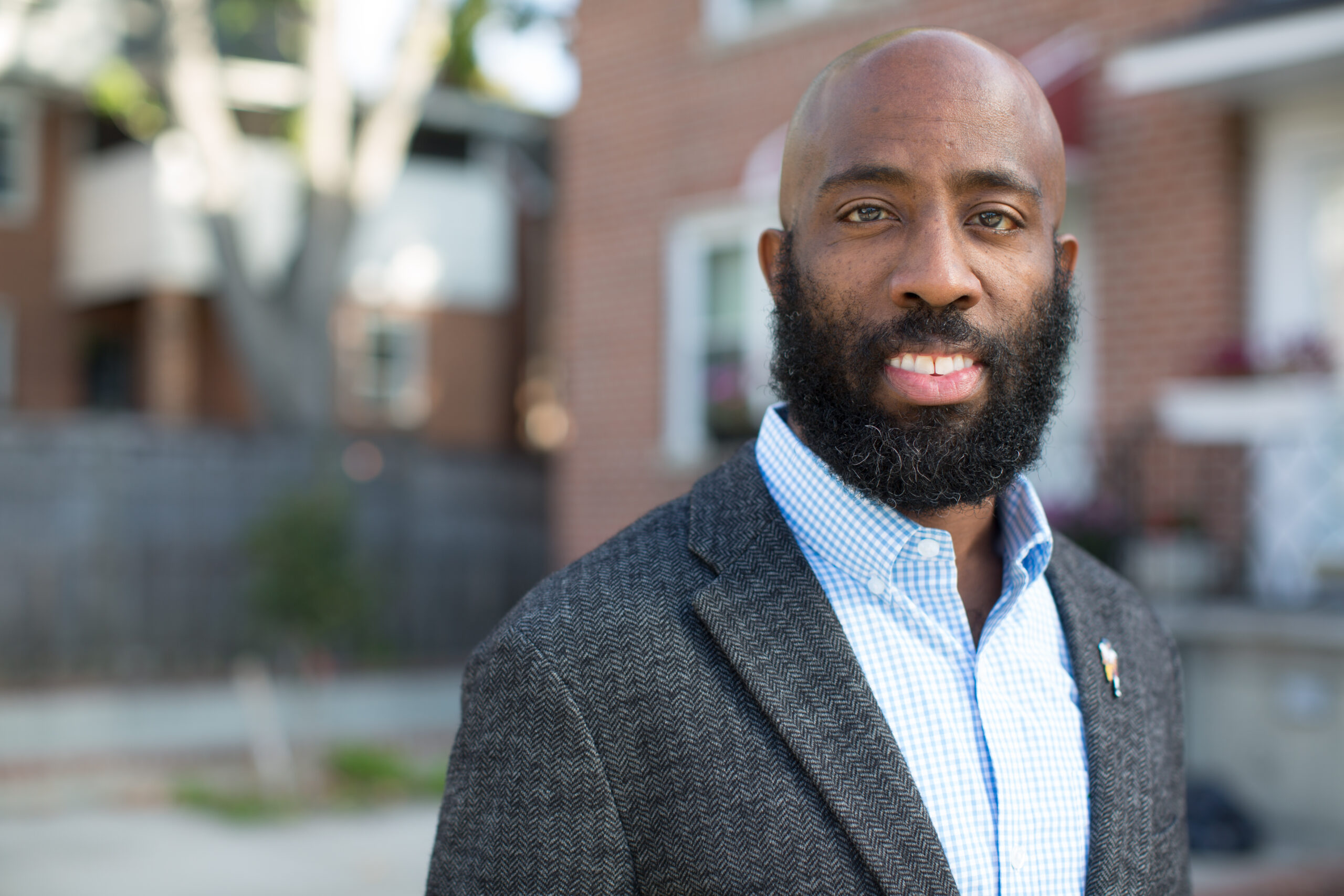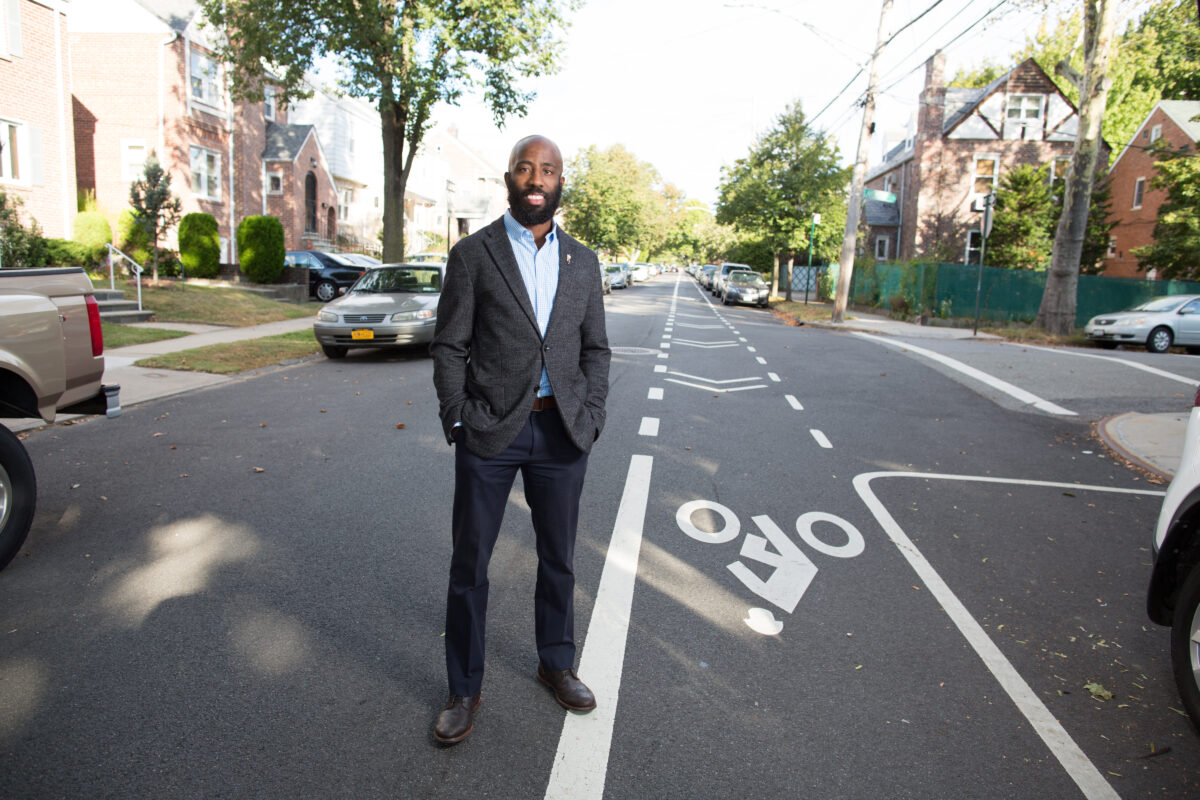
Earle Chambers, Ph.D., M.P.H. studies the relationship between the spatial development of neighborhoods and the health of the people that inhabit them. He currently serves as the Director of Research in Family and Social Medicine at Albert Einstein College of Medicine. Driven by a commitment to social justice, Dr. Chambers researches the factors related to your environment—from the infrastructure in your zip code to how your apartment is laid out—that impact health and wellbeing. His research seeks to inform health scientists and urban practitioners on what those factors are, and how we might change them for the better. As a member of the Forum’s Good Form Committee, Dr. Chambers has been vital in shaping our 2022-23 Next New York series convening design and public health professionals to discuss shaping a healthier city. See his full bio below.
I talked to Dr. Chambers about collaborating across disciplines, his research on the health impacts of gentrification-driven displacement, and what has made him and his wife New Yorkers-by-choice for the last 20 years.
GB: What do you do and what are you passionate about?
EC: I’m an epidemiologist, which is basically a population health scientist. I spend a lot of my time studying the impact of the built and social environments on different health risks, mostly around chronic diseases like diabetes and heart disease. My interest and training is in public health, which orients how I view science and health-related problems. But all of my work is informed by an overarching social justice mission. The work that I do around public health deals with the circumstances or the conditions that people live within.
How did you get involved with work incorporating urban design, as a population health scientist and a professor at a medical school?
EC: Any recommendations to help people prioritize healthier living options need to be within the context of where they live, and what’s available to them, and the kinds of experiences that they’re able to have or resources they’re able to access in their neighborhoods, their towns, or their cities. It started with thinking about physical activity and walkability. I was trying to think more about how the built design, the built structure, the way that neighborhoods are laid out, or the way that buildings are laid out impacts how people are able to access spaces by walking. Walking, or any physical activity, is a health behavior that we try to encourage. Whether people are able to actually do that can depend a lot on where they live, and what they have access to. That depends on green spaces, or parks, or sidewalks that are walkable, or neighborhood design features that make it pleasant to walk around as part of leisure time activity.
These fields are really not too far away from each other, even though it may seem like it. You want people to live their best life, and be able to maximize their wellbeing. But they have to have the options to do that. I spend my time examining health problems in that way. My contribution to these social issues is to provide whatever evidence I can to lend to that cause.
Did you always know that that’s what you wanted to do, or did you come to it?
EC: I think I came to how I would contribute later on, but I’ve always been aligned with campaigns for social justice and equity in many ways. I went to a Jesuit high school and was trained by Jesuits. They have a strong social justice mission. That helped to form a lot of my views on the way that society can tip the balance with respect to the opportunities that certain people have over others. It took a little bit longer for me to figure out how I was going to play a role in that. College and graduate school was sort of me fine tuning how I would do that in my career. So the “how” has been a work in progress, I suppose, but with everything sort of pointing in the direction of social justice.
What has it been like to do work that engages researchers of varying disciplines?
EC: In a recent study I was collaborating with a colleague of mine in architecture. He was working on spatial analysis—how the different layouts of building units can influence socialization patterns within them. And I was interested in how these buildings can influence our ability to walk through these spaces, or even contribute to other kinds of social dynamics, like anxiety or depression. Interrogating these together required recognizing that we come from different disciplines. The language and vocabulary around certain things was different. My orientation was around public health and he was oriented around the built design. To make sense of our common interests around health and wellness, we had to come up with a common language about how we’re going to talk about these things. It was interesting to think about how we could be more interdisciplinary when we’re talking about addressing these kinds of health issues. The more we do this, the better off we all are with trying to understand how people work and operate in different living spaces — and the ways we can intervene to fix these complicated problems.
You’ve also recently been conducting research in a neighborhood in the Bronx that’s been experiencing a fast rate of displacement, community change, and redevelopment. What are you studying there?
EC: I’ve been looking at the built environment’s relationship to health outcomes in the Bronx for a while. The project that I’m working on now examines some of the health effects that happen when a major redevelopment occurs — when there’s an influx of investment to change a particular area, with the goal of either increasing the amount of affordable housing that’s in those spaces, or providing upgrades to park space or sidewalks, or attracting new businesses. When those kinds of developments happen, there’s always a fear that it will cause displacement for residents that have been living there for a while. It’s a reasonable fear, because it happens all the time. And so the question then becomes, for me, how can we measure these changes over time, and do these changes affect different health outcomes? The study is focused mostly on cardiovascular disease—heart disease and stroke for the most part—among older residents, those 55+.
We’re taking a group of residents that live around this area of Jerome Avenue that’s going through redevelopment and looking at them in comparison to another neighborhood that has not gone through redevelopment yet. For example, we’re going to ask them detailed questions about things like their dietary and food activity patterns, and different psychosocial kinds of variables, like anxiety and symptoms of depression. We will ask about social isolation; we’ll ask about a number of different health measures that we know are related to cardiovascular health, but are also influenced by changing environments. Then we’ll use that data in micro-simulation modelings to try to project these health outcomes over time. It’s a very comprehensive way to utilize all the data that we’re collecting together and be able to say something about how these different kinds of redevelopments are affecting this older group of adults living in these spaces.

Where are there further opportunities for us to bring urban planning, architecture and public health into deeper dialogue?
EC: I’m thinking about how we can address what is a threat to the species in general: climate change. This provides an all-hands-on-deck opportunity to figure out how we’re going to deal with this. In design, and urban design, people are thinking about how to address issues like super storms, heat mitigation, and how to build better ways to deal with those impending threats. Within health care, it also poses a huge problem for us. Extreme heat events kill more people than any other weather-related event. It’s only getting hotter and hotter. We need to think of ways in which we’re identifying our patients, or even our residents, that are at highest risk. And then also figuring out how we can collaborate with the different kinds of stakeholders that address issues around extreme heat. (I’m using extreme heat as an example, because it’s a big one for us here, right?) It really shows how different kinds of expertise are necessary to try to figure out how to deal with this. It will take everything from policy advocates to health care providers, to people who are designing or redesigning or redeveloping or building. I mean, there are codes around how buildings should be built to not absorb quite so much heat. All of those things are top of mind, if we’re interested in our species surviving.
What makes New York City special?
I live in Washington Heights in upper Manhattan, with my wife and two kids. New York is dynamic in ways that we find exciting, almost daily. My kids are New Yorkers, but my wife and I didn’t grow up in New York. I grew up in Maryland, right outside of Washington, DC, and my wife is from Harrisburg, Pennsylvania. We met in graduate school at the University of Pittsburgh, where we both did our PhD work. And we’ve made New York City our home for the last 20 years. We love it here. We have found a place where we want to raise our kids. It has opportunities for them—and for my wife and I—to explore lots of different aspects of ourselves. It suits our lifestyle, I suppose. I appreciate the freedom to be your most authentic self here in New York City. You can always find some place to do the things you want to do here.
If you could have any job in the world—real or imaginary—what would it be?
EC: This is a hard question, because I like the job I have. This is gonna sound weird, but I want to solve cold cases. If there were a parallel universe, and I was not bound by the laws of reality, I guess I’d be a detective. I don’t know why, but I feel like I’d be good at that.
This interview was edited and condensed for clarity.
Images credit: Jason Torres
Earle Chambers, Ph.D., M.P.H., is the Director of the Division of Research and Professor of Family and Social Medicine at the Albert Einstein College of Medicine-Montefiore Health System in the Bronx. Dr. Chambers also holds leadership positions at the Einstein-Montefiore Institute for Clinical and Translational Research and the New York Regional Center for Diabetes Translation Research, in addition to being a devoted partner and the father of two teenage boys.
Dr. Chambers completed his B.S. in Biology at Duke University, his MPH at the University of Illinois at Chicago, and his doctoral degree at the University of Pittsburgh Graduate School of Public Health, receiving his Ph.D. in epidemiology in 2003. Dr. Chambers completed his post-doctoral training at the New York Obesity and Nutrition Research Center at Columbia University.
His research examines the intersection of the social and built environments on chronic disease risk among historically excluded populations. He also has experience in diabetes prevention and has conducted research examining the reach and effectiveness of the Diabetes Prevention Program in clinical settings. Dr. Chambers’ research has been supported by the National Institutes of Health, the Robert Wood Johnson Foundation, and the John D. and Catherine T. MacArthur Foundation.